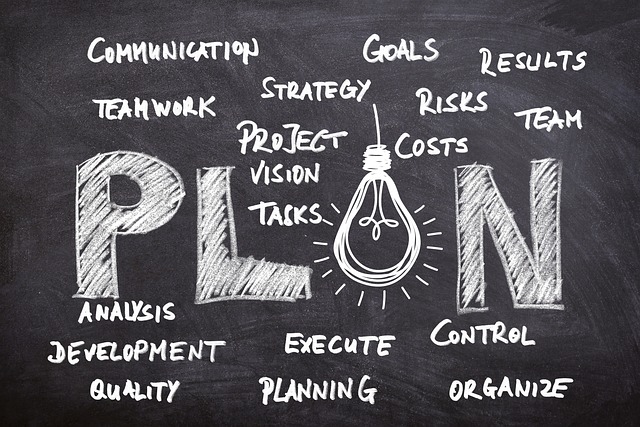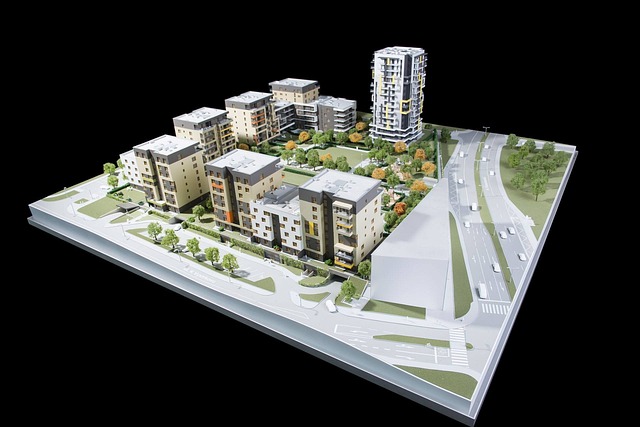Event Planning for Local Businesses involves strategically integrating local businesses into community outreach events to create mutually beneficial relationships and enhance community engagement. This process requires careful alignment of event goals with business interests, leveraging the unique competencies of each local enterprise, such as marketing expertise or product offerings. A dedicated liaison role ensures clear communication and well-defined responsibilities, fostering innovation, adaptability, and a shared sense of responsibility among participants. By collaborating, these events can showcase businesses' dedication to their communities while accessing diverse resources and specialized knowledge from the business sector. This approach not only elevates the event experience but also strengthens community bonds. Effective event planning for local businesses utilizes both digital marketing, like targeted social media ads and influencer partnerships, and traditional marketing methods, ensuring maximum participation and visibility. The integration of branding that aligns with local businesses' identities and the provision of promotional opportunities at events further amplify local commerce and community engagement. To measure success, clear SMART goals are established, tracking metrics like foot traffic, customer sentiment, and event-related revenue. Post-event surveys help in understanding attendee satisfaction, ensuring that the initiatives resonate with the community and benefit all stakeholders involved in Event Planning for Local Businesses.
Communities thrive on collaboration and shared initiatives, particularly when it comes to outreach events that bring local businesses and residents together. This article delves into a strategic framework for engaging these businesses in community-centric activities, highlighting the importance of partnerships and effective marketing to drive event success. We’ll explore innovative approaches to event planning for local businesses, ensuring their involvement not only enhances the event but also benefits the broader community. Additionally, we’ll examine the critical metrics used to measure the impact of these initiatives, offering insights into their effectiveness in fostering a vibrant and interconnected local economy.
- Strategic Framework for Engaging Local Businesses in Community Outreach Events
- Collaborative Approaches: Partnerships That Drive Event Success
- Marketing and Promotion Tactics for Maximizing Local Business Involvement
- Measuring Impact: Evaluating the Effectiveness of Community Outreach Initiatives with Local Business Participation
Strategic Framework for Engaging Local Businesses in Community Outreach Events

In crafting a strategic framework for engaging local businesses in community outreach events, it’s crucial to align the objectives of the event with the interests and capabilities of these businesses. Event Planning for Local Businesses should begin with identifying key stakeholders within the community who can provide valuable resources, influence, and expertise. These partnerships not only enhance the event’s reach but also foster a sense of shared responsibility and mutual benefit. By leveraging the unique strengths of each business, such as marketing acumen, logistical support, or product/service offerings, events can be more effectively planned and executed. This collaborative approach ensures that local businesses are integral to the event’s success, creating opportunities for brand visibility and customer engagement while addressing community needs.
Furthermore, successful integration of local businesses into community outreach events hinges on clear communication and established roles. A dedicated liaison can facilitate this process by maintaining open channels with business owners, providing updates, and soliciting feedback throughout the event planning cycle. This collaborative model encourages innovation and adaptability in planning, ensuring that the event remains dynamic and responsive to the evolving needs of the community. By embracing Event Planning for Local Businesses as a symbiotic endeavor, communities can harness the collective power of local enterprises to create meaningful, impactful events that resonate with participants and stakeholders alike.
Collaborative Approaches: Partnerships That Drive Event Success

Community outreach events often hinge on the synergy created through local business partnerships, which are pivotal in steering these initiatives toward successful outcomes. By engaging with local businesses during event planning, organizers can tap into a wealth of resources and expertise that these enterprises bring to the table. For instance, a collaborative approach might involve a coffee shop providing refreshments or a tech company offering promotional materials and technology support. These partnerships not only enhance the event’s offerings but also foster goodwill within the community, as local businesses gain visibility and an opportunity to demonstrate their commitment to community well-being. Such alliances are instrumental in curating events that resonate with attendees, reflecting the values and needs of the local population while also showcasing the capabilities of the businesses involved. The strategic integration of local businesses into event planning for community outreach ensures a more enriching experience for participants and a robust support framework for organizers. This symbiotic relationship is key to the success of community events, as it leverages the strengths of each party to create an impactful and memorable occasion.
Marketing and Promotion Tactics for Maximizing Local Business Involvement

Community outreach events serve as pivotal touchpoints between local businesses and their clientele, fostering a mutually beneficial relationship that can lead to increased patronage and community cohesion. To maximize local business involvement in these events, strategic marketing and promotion tactics are essential. Event planners should leverage social media platforms, utilizing targeted ads and engaging content to reach a local audience effectively. Collaborating with influencers or community figures who have a strong following can amplify the event’s visibility. Additionally, traditional marketing methods such as flyers, local newspapers, and word-of-mouth are still influential within communities. By partnering with these businesses early in the event planning process, organizers can integrate their products or services into the event experience, creating value for both the attendees and the participants. Offering promotional opportunities at the event, such as exclusive deals or product samples, encourages local businesses to actively engage and contribute to the success of the outreach initiative. This symbiotic approach not only enhances business exposure but also enriches the community experience, making the event a cornerstone for local commerce and community engagement.
Furthermore, incorporating branding elements that align with the local businesses’ image can solidify their commitment to the community. Event planners should ensure that marketing materials and event signage include the participating businesses’ logos and messaging. By doing so, these businesses gain a sense of ownership over the event and are more likely to invest time, resources, and promotional efforts. Utilizing local business associations or chambers of commerce can also provide a broader reach and access to collective marketing resources, further elevating the visibility of the outreach event. It’s crucial for event planners to maintain open lines of communication with the local businesses involved, providing updates and opportunities to contribute ideas or feedback throughout the planning process. This collaborative approach ensures that the event is not only well-attended but also delivers tangible benefits to the participating businesses, creating a vibrant and successful community outreach initiative.
Measuring Impact: Evaluating the Effectiveness of Community Outreach Initiatives with Local Business Participation

Community outreach initiatives that involve local businesses serve as pivotal avenues for fostering engagement and mutual benefit. To accurately measure the impact of these events, it’s crucial to establish clear metrics beforehand. These metrics should align with both the community’s needs and the objectives of participating businesses. By setting specific, measurable, achievable, relevant, and time-bound (SMART) goals, organizers can track outcomes such as foot traffic, customer sentiment, and revenue generated from promotions tied to the event. Surveys and feedback forms distributed post-event offer valuable insights into consumer behavior and satisfaction levels, which are key indicators of an initiative’s success. Additionally, partnerships with local businesses for community outreach events can enhance brand visibility and solidify the businesses’ roles as integral members of the community fabric. The integration of these businesses within event planning not only amplifies the reach and effectiveness of the outreach but also ensures a more authentic and impactful connection with the community at large. Analytics and data collection are indispensable in this process, providing concrete evidence of performance and informing future strategies to maximize the positive outcomes for all stakeholders involved.
Community outreach events serve as pivotal touchpoints between local businesses and their neighborhoods, fostering mutual growth and engagement. This article has outlined a strategic framework tailored to leverage local business involvement in these events, emphasizing collaborative approaches that are key to their success. Through innovative marketing and promotion tactics, local enterprises can maximize their participation and impact. By rigorously evaluating the outcomes of such initiatives, we can ensure that community outreach efforts not only thrive but also deliver tangible benefits. Embracing event planning for local businesses is essential for nurturing a vibrant community fabric and sustaining economic vitality. As stakeholders come together, these events underscore the collective power of collaboration and shared purpose in driving positive change.






